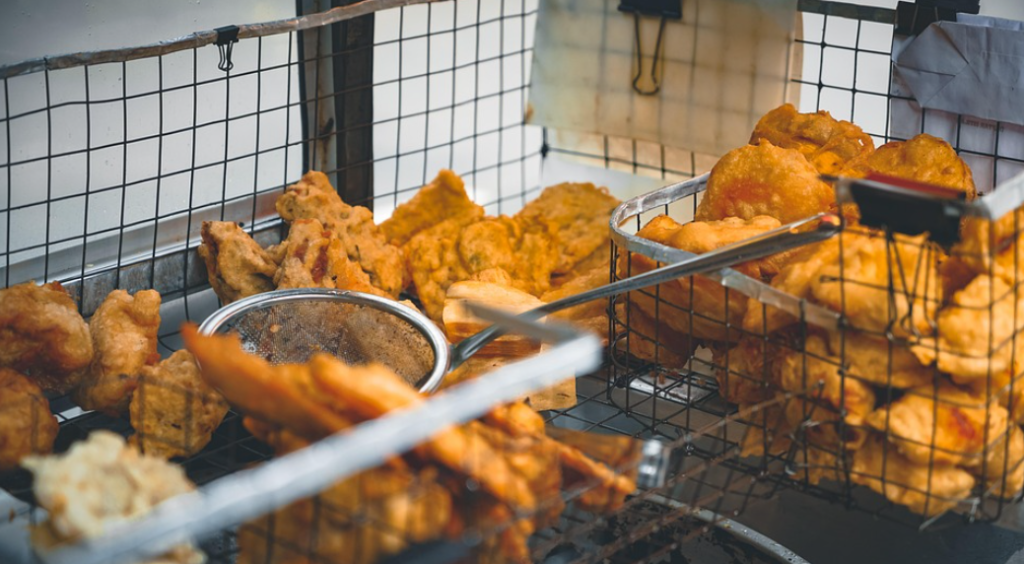
Street food—it’s not just food; it’s an experience, a cultural exchange, and often the quickest route to discovering a city’s true flavor. From sizzling tacos in Mexico to aromatic chaat in India, street food is an integral part of local life. But what makes eating street food such a unique adventure? In this guide, we’ll walk you through the most iconic street foods around the world and help you navigate the bustling stalls like a true local.
What Makes Street Food So Special?
Street food isn’t just about eating on the go—it’s about connecting with a community. These foods are often passed down through generations, preserving the essence of a region’s culinary history. Whether it’s a simple taco or a complex pad thai, street food encapsulates the traditions, flavors, and cultural nuances of a place. What’s more, these foods are usually made with fresh, locally sourced ingredients, making them a reflection of the area’s agricultural richness.
Street food is affordable, accessible, and often bursting with flavors that represent the heart and soul of a place. It’s an unpretentious way of experiencing a culture and connecting with people, all while indulging in mouthwatering dishes. But the true beauty of street food lies in its diversity—every country has its own unique take on what constitutes the perfect street snack.
Street Food and Its Global Appeal
It’s no secret that street food has a magnetic pull, attracting both locals and travelers. Across the world, street food markets are thriving. From the ancient streets of Bangkok to the busy avenues of Mexico City, food vendors serve up an endless variety of dishes that speak to the heart of a city. This global appeal is what has made street food one of the fastest-growing culinary trends worldwide.
The Global Street Food Phenomenon
Have you ever walked down a foreign street and been tempted by the sizzling sounds and spicy aromas drifting from food stalls? Whether you’re in Southeast Asia, Europe, or Latin America, street food brings people together. It’s a phenomenon that transcends borders, offering a universal language of taste. This is why eating street food is one of the best ways to experience a country’s culture firsthand.
Top Street Foods from Around the World
Let’s dive into some of the best street foods from around the globe. These dishes are not just popular for their taste; they’re part of what makes each country’s food culture so vibrant and unique.
Mexico – Tacos al Pastor
When it comes to Mexican street food, tacos al pastor reign supreme. Originating in Mexico City, these tacos are made with marinated pork that’s cooked on a vertical spit (similar to shawarma). The pork is sliced thinly, and then served in soft corn tortillas, topped with onions, cilantro, and a slice of pineapple.
Tacos al pastor are the perfect combination of savory, spicy, and sweet, offering a flavor profile that’s simply unforgettable. Found in bustling food stalls across Mexico, these tacos are a must-try for anyone visiting the country.
Thailand – Pad Thai
In Thailand, pad thai is more than just a dish—it’s a cultural symbol. This stir-fried noodle dish is packed with flavor, featuring rice noodles, shrimp or chicken, tofu, peanuts, bean sprouts, and lime, all tossed in a tangy tamarind sauce. Whether you’re in Bangkok or Chiang Mai, pad thai is readily available from street vendors, and it’s a perfect introduction to Thailand’s rich culinary tradition.
The beauty of pad thai lies in its balance of sweet, salty, sour, and spicy flavors. Each vendor has their own version, making it a dish that’s as diverse as Thailand itself.
Japan – Takoyaki
If you’re wandering through the streets of Osaka, don’t miss out on takoyaki—a savory snack made from batter, octopus pieces, and pickled ginger, all cooked into small, round balls. These delicious morsels are typically served with a drizzle of takoyaki sauce and a sprinkle of bonito flakes.
Takoyaki is a fun, finger-food delight that’s perfect for munching on the go. It’s crispy on the outside, soft on the inside, and bursting with the umami flavor of the ocean.
India – Chaat
India’s street food scene is a feast for the senses, with one of the most famous dishes being chaat. This term refers to a variety of snacks, often consisting of crispy fried dough, yogurt, tamarind chutney, and a variety of spices. Popular variations include pani puri, bhel puri, and sev puri.
What makes chaat so special is the explosion of flavors in each bite—tangy, sweet, spicy, and salty. It’s a social food, often shared among friends and family while walking through markets or sitting by a roadside stall.
Italy – Pizza Margherita (Street Style)
Italy is known for its rich food culture, and pizza margherita is one of its most beloved dishes. While pizza is often associated with sit-down meals, in Italy, it’s not uncommon to find delicious street-style pizza margherita sold by the slice at busy pizzerias. The pizza is made with a simple but perfect combination of dough, fresh tomatoes, mozzarella cheese, and basil.
Street pizza is usually served fresh and hot, with the dough slightly thicker than traditional Neapolitan pizza, making it easier to eat on the go. In cities like Rome and Naples, pizza is an essential part of the street food experience.
Vietnam – Bánh Mì
In Vietnam, bánh mì is the ultimate fusion food. This sandwich combines French influences with Vietnamese ingredients—crispy baguette filled with cold cuts, pickled vegetables, cilantro, and chili. It’s a perfect blend of textures and flavors, from the crunchy bread to the spicy, tangy fillings.
Found everywhere from street carts in Ho Chi Minh City to food markets in Hanoi, bánh mì is a must-try for anyone seeking to understand the complex food culture of Vietnam.

The Cultural Impact of Street Food
Street food is more than just food—it’s a reflection of a community’s identity. It mirrors the history, traditions, and socio-economic conditions of the area it originates from. Street vendors often use local ingredients, keeping food production small-scale and accessible. This not only keeps prices low but also supports local agriculture and creates jobs.
Street Food as a Reflection of Tradition
In many countries, street food is steeped in history. For instance, tacos al pastor are a fusion of Middle Eastern and Mexican flavors, a product of immigration and cultural exchange. Similarly, pad thai evolved during Thailand’s post-war period as a way to promote nationalism. The history embedded in these street foods offers a window into the evolution of local societies.
Street Food’s Role in Urban Life
In fast-paced urban environments, street food plays a pivotal role in providing quick, affordable meals. It offers a snapshot of daily life, where food serves as a point of connection, often bringing together people from all walks of life.
How to Find the Best Street Food
Knowing how to find the best street food is key to ensuring you don’t miss out on a culinary gem. Here are some tips:
Look for the Crowds
Generally, food stalls with long lines and a steady flow of customers are a good sign. Locals tend to know where the best food is, so follow the crowds. After all, who better to trust than the people who eat there every day?
Pay Attention to Hygiene
While street food is delicious, hygiene is crucial. Always check for cleanliness—look at the vendor’s setup and the freshness of the ingredients being used. A good vendor will always prioritize cleanliness.
Street Food Etiquette
Before diving into that delicious plate of pad thai or taco al pastor, it’s essential to understand local street food etiquette. Respecting the local customs not only enhances your experience but shows appreciation for the culture.
Respecting Local Practices
Different countries have different practices when it comes to eating street food. For example, in Thailand, it’s common to eat your meal while standing at the stall, while in Vietnam, it’s customary to share a meal with a group. Understanding these practices ensures that you experience street food the way locals do.

Conclusion
Eating street food is one of the best ways to experience the true essence of a place. From the bustling markets of Thailand to the vibrant street corners of Mexico City, these foods tell the story of their culture and history. So next time you’re traveling, forget the fancy restaurants—head to the streets and eat like a local!
FAQs
1. Is street food safe to eat?
Yes, as long as you choose vendors with high foot traffic and maintain hygiene awareness, street food can be quite safe to eat.
2. What’s the best way to find authentic street food?
Look for crowded stalls, ask locals for recommendations, and always prioritize hygiene.
3. Can I eat street food while traveling solo?
Absolutely! Street food is often the perfect way to meet new people and immerse yourself in the culture.
4. What if I have dietary restrictions?
Don’t hesitate to ask vendors about ingredients, and many places offer vegetarian or gluten-free options.
5. How do I know if a street food vendor is trustworthy?
Check for a clean setup, high customer volume, and fresh ingredients to gauge whether a street food vendor is reliable.





